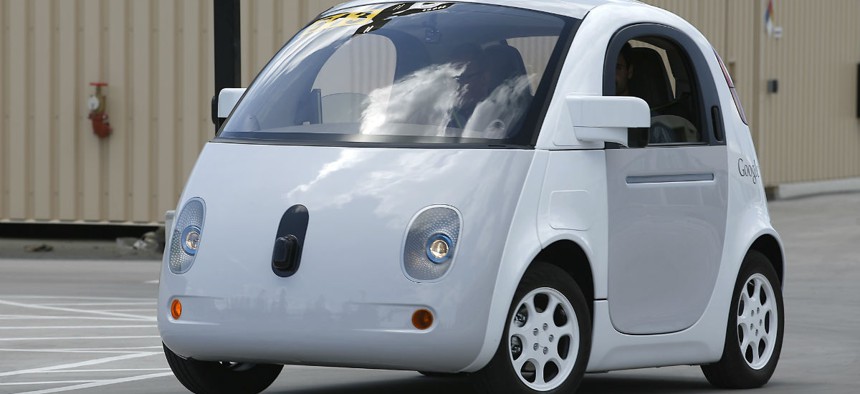Self-Driving Cars Could Save 300,000 Lives Per Decade in America

Google's new self-driving prototype car Tony Avelar/AP
Automation on the roads could be the great public-health achievement of the 21st century.
If driverless cars deliver on their promise to eliminate the vast majority of fatal traffic accidents, the technology will rank among the most transformative public-health initiatives in human history. But how many lives, realistically, will be saved?
By the end of this century, there’s good reason to believe that tens of millions of traffic fatalities will be prevented around the world.
This is not merely theoretical. There’s already some precedent for change of this magnitude in the realms of car culture and automotive safety. In 1970, about 60,000 people died in traffic accidents in the United States. A dramatic shift toward safety—including required seat belts and ubiquitous airbags—helped vastly improve a person’s chance of surviving the American roadways in the decades that followed. By 2013, 32,719 people died in traffic crashes, a historic low.
Researchers estimate that driverless cars could, by midcentury, reduce traffic fatalities by up to 90 percent. Which means that, using the number of fatalities in 2013 as a baseline, self-driving cars could save 29,447 lives a year. In the United States alone, that's nearly 300,000 fatalities prevented over the course of a decade, and 1.5 million lives saved in a half-century. For context: Anti-smoking efforts saved 8 million lives in the United States over a 50-year period.
The life-saving estimates for driverless cars are on par with the efficacy of modern vaccines, which save 42,000 lives for each U.S. birth cohort, according to the Centers for Disease Control.
Globally, there are about 1.2 million traffic fatalities annually, according to the World Health Organization. Which means driverless cars are poised to save 10 million lives per decade—and 50 million lives around the world in half a century.
“By midcentury, the penetration of [autonomous vehicles] and other [advanced driver-assistance systems] could ultimately cause vehicle crashes in the United States to fall from second to ninth place in terms of their lethality ranking among accident types,” wrote Michele Bertoncello and Dominik Wee in a paper for the consulting firm, McKinsey & Company. Bertoncello and Wee further estimate that better road safety will save as much as $190 billion a year in health-care costs associated with accidents.
Of course, all this relies on widespread adoption of driverless cars, which is as much a cultural hurdle as a technological one. As Andrew Moore, the computer science dean at Carnegie Mellon recently told me, “No one is going to want to realize autonomous driving into the world until there’s proof that it’s much safer, like a factor of 100 safer, than having a human drive.”
And even then, there are complex questions to consider. People are still establishing frameworks for how to think about responsibility in a driverless world. Even with cars that are a factor of 100 safer than their manned predecessors, fatal accidents will happen.
“There will be situations where a car knows that it's about to crash and will be planning how it crashes,” Moore said. “There will be incredible scrutiny on the engineers who wrote the code to deal with the crash. Was it trying to save its occupant? Was it trying to save someone else?”
Moore suggests the driverless car revolution will hit a snag—setting it back at least a few years—after the first high-profile fatalities. Others have made similar predictions. It may be during the transition to wider-spread driverless adoption that autonomous vehicles are least trusted and roads are most dangerous.
“During the transition period when conventional and self-driving vehicles would share the road, safety might actually worsen, at least for the conventional vehicles,” wrote Michael Sivak and Brandon Schoettle, transportation researchers at the University of Michigan, in a paper earlier this year.
After all, even a machine with a sterling driving record can’t account entirely for human error. Google’s fleet of self-driving cars has learned this lesson first hand. Its cars have driven in autonomous mode for more than 1 million miles since 2009. In all that time, they’ve been involved in 16 accidents through August—none of which were caused by the self-driving car.
All this suggests that, despite the growing pains ahead, the promise of driverless cars remains enormous—and within reach.





